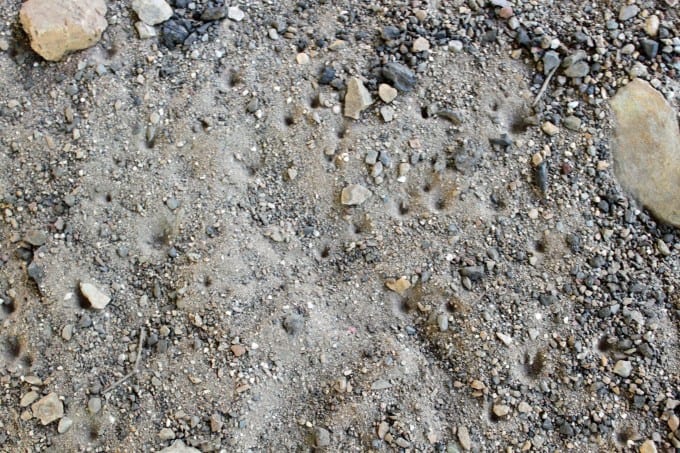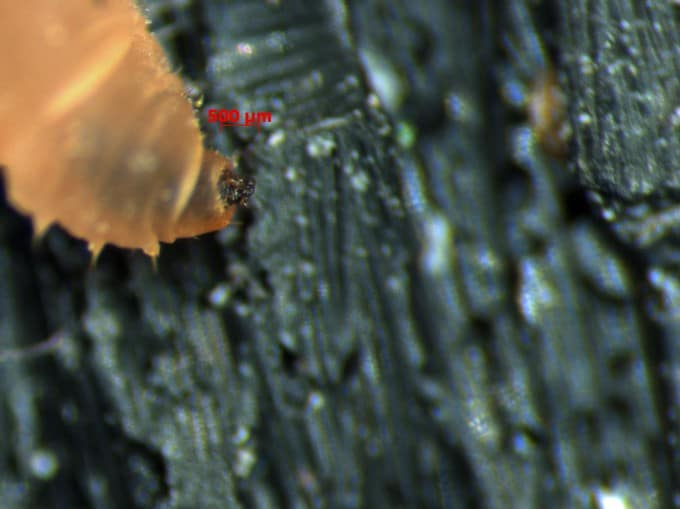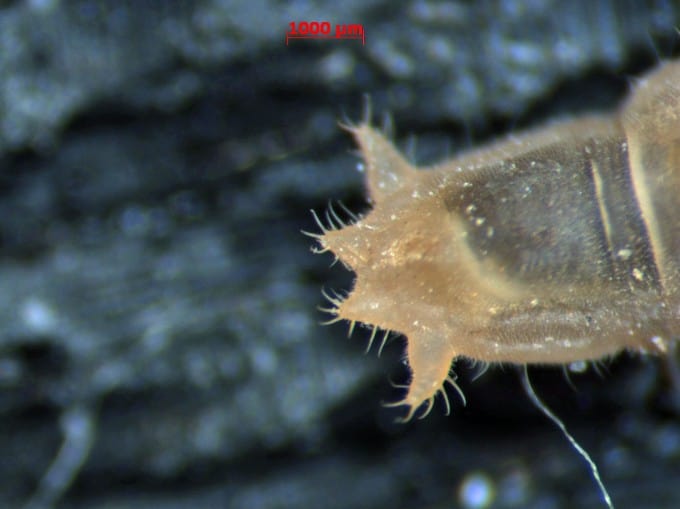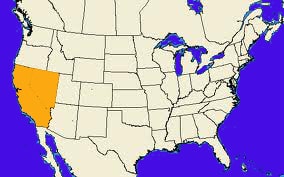
On a recent trip I stumbled onto pits in sandy soil. The first thing that came to mind was Antlions which congregate in dry soil. They sit in the bottom of the pits and wait for unsuspecting prey to fall in. Upon further investigation I found that there were small worm-like larvae in the bottom of these pits. They were somewhat strange looking having no pronounced prolegs or large sclerotinized mandibles to grab prey with.

So once I figured out that these were not Antlions I figured I’d throw in some prey to see what happened. When I did, I was surprised. The larvae grabbed onto the ant right away and sunk its mouthparts into it. After this display I decided to collect some of the larvae to rear them out and try to learn a little more about them. The first thing I did was take one to the office to try and identify what it was.

Once under the stereo microscope I found a few key characteristics that helped get a positive ID on it. The first thing I noticed was a ventral pseudopod (image above) on its 5th segment. This structure assists the larvae in holding onto prey while it injects digestive fluids through its fang-like mandibles (image below). The second unique thing I saw was the shovel like posterior end containing 4 large protrusions. Each protrusion has long hair like structures to assist in anchoring the larvae for feeding (image below).



After I took some pictures with Mikes help, I forwarded them to Dr. Chris Tipping to see what he thought it was. With his response of possibly being a snipe fly I started doing some research. I found that this larva was in the Rhagionidae family historically but now has been placed in its own family Vermileonidae. The common name for this larva is “Wormlion” named after the Antlion (Myrmeleontidae). There are less than 80 species worldwide making this insect somewhat rare. The only distribution I found on this family in the US was in California and Nevada (image below). I think they are more widespread in other high desert-like or dry climates across the country. I am hoping to rear these out to see what the adults look like for a future blog.
